What I Learned From a Car Crashing Into my House
Late last summer, our client Kim Ehrman, a resident of Tower Grove South, faced a shocking event when a car crashed into her house in the middle of the night at 2:20 a.m. leaving a massive hole in her house. Drawing on her experience, Kim shared the story and valuable lessons she learned throughout the home repair process with her consulting company, FlexPoint, where she serves as Director of Business Transformation. She graciously allowed us to reprint her story here. We think you will find a lot of great tips about managing major repairs and setting expectations with vendors.
Beyond her professional accomplishments, Kim is also the creative force behind Lavender Finch, a greeting card line she launched during the pandemic. You can frequently find her booth at the Tower Grove Farmer’s Market. She’s great friends with our own teammate, Kristin, who lent a hand during the project.
The Accident
On Saturday, August 3, at 2:20am, a car ran into my house. I honestly thought it was thunder and groggily picked my head up, removed my earplugs and eyeshades momentarily, then laid my head back down. My sister looked out the window to see that there was a Mercedes sticking out of the foundation and got me and the dog out of bed.
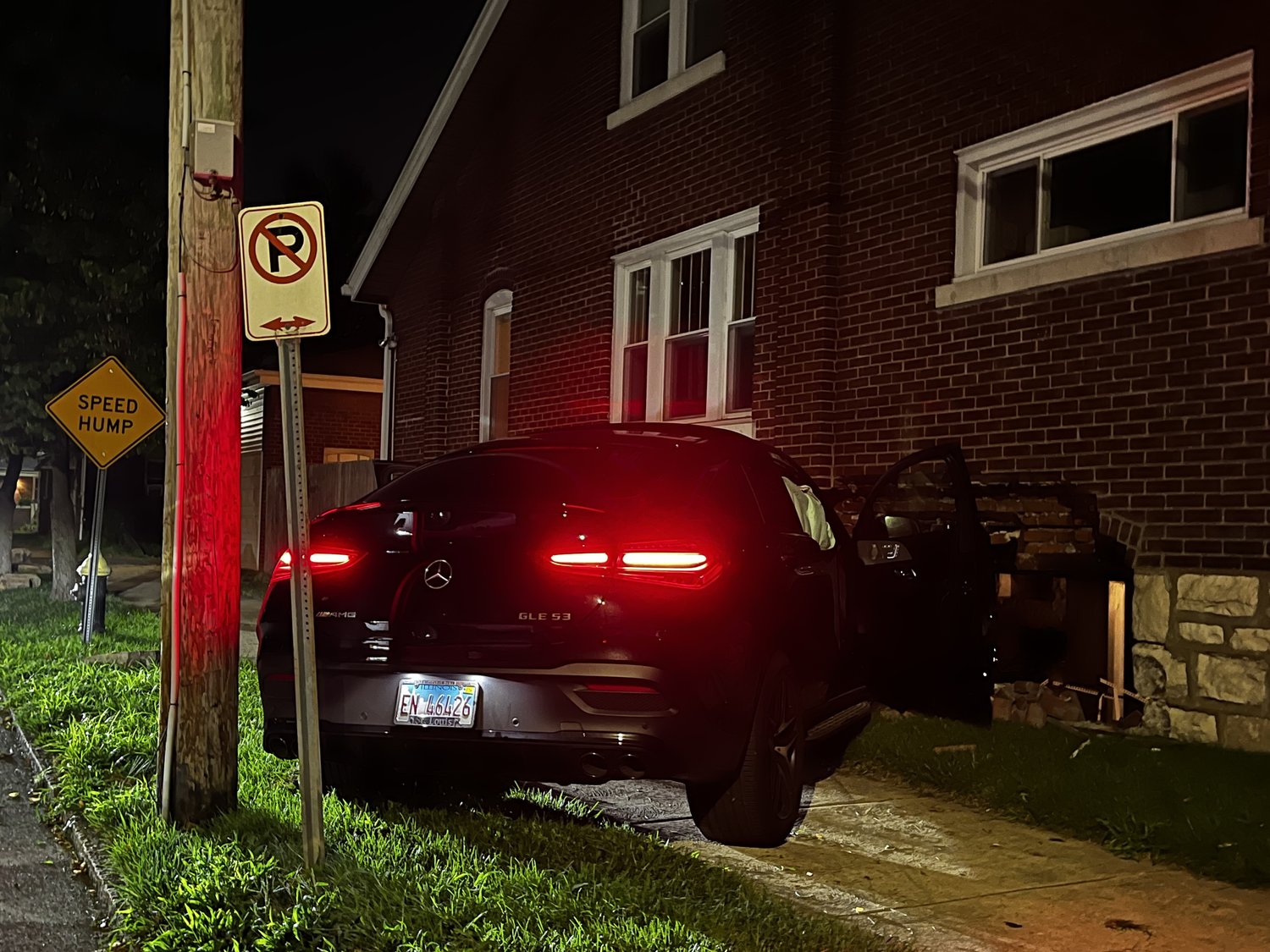
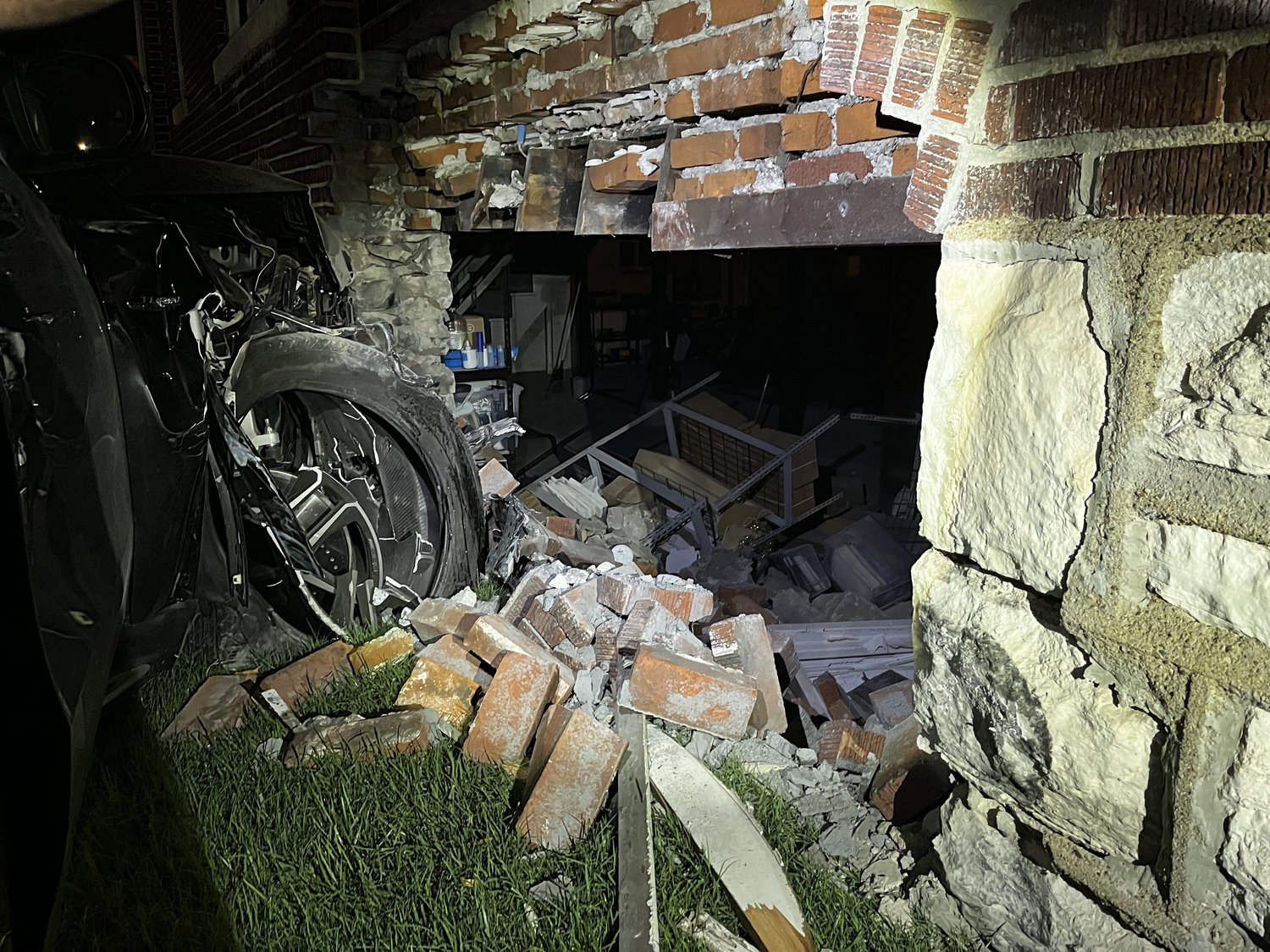
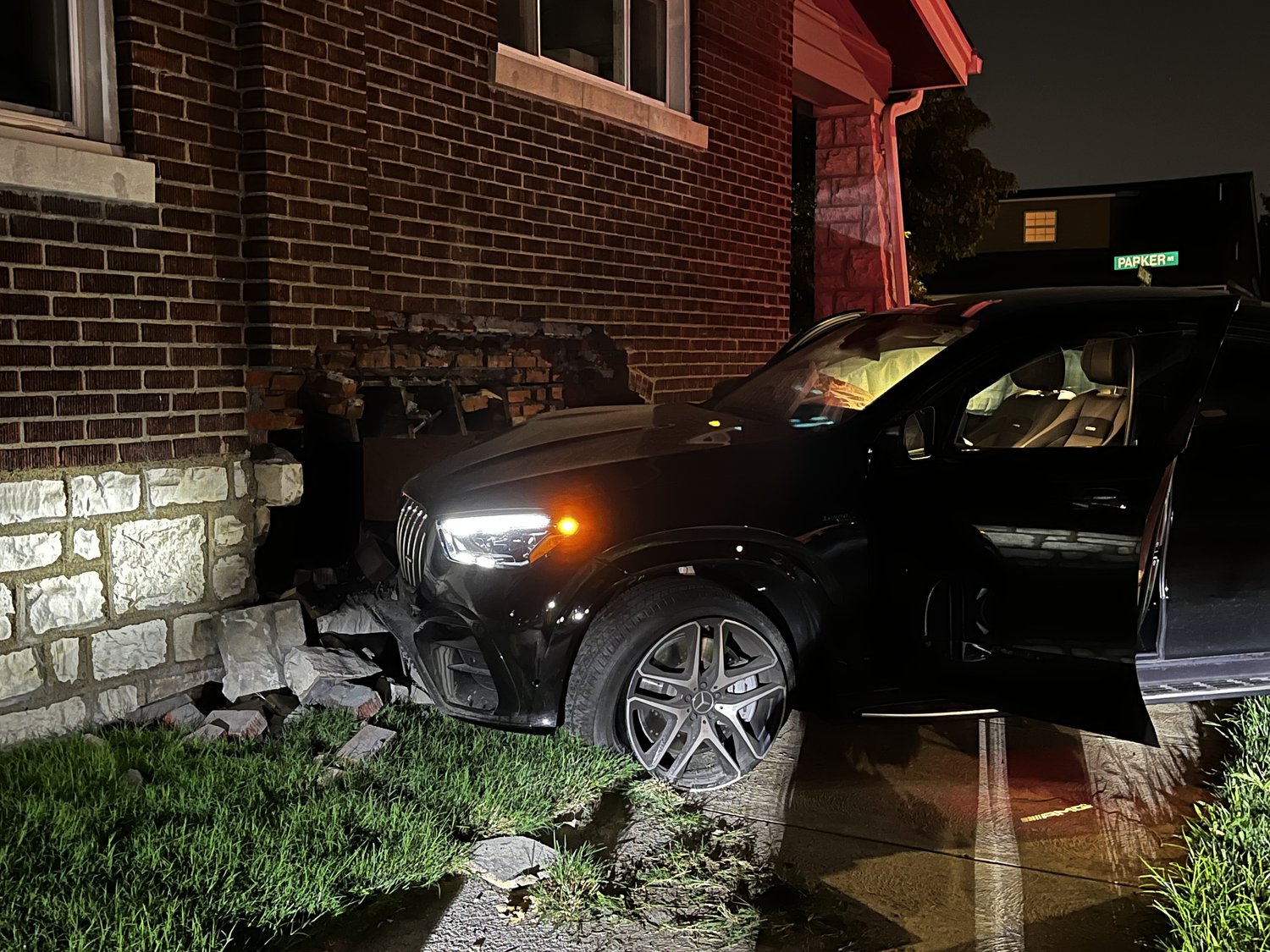
Over the next three hours, we saw the fire department, emergency building inspector, EMTs, several police officers, a tow truck driver, and several caring neighbors. Two neighbors in particular (thanks, Sara and Aaron!) were voices of reason at a completely unreasonable hour and took the dog to their house for the rest of the night.
We also endured a lot of crying and screaming from the driver and passengers (who were safe, thanks to a plethora of air bags and the excellent construction of their car and my house) and a lot of forced conversation with the driver’s mother, who owned the (brand new) car. I sent her away after the car was towed, since I honestly couldn’t deal with the house situation and the awkwardness of having her there.
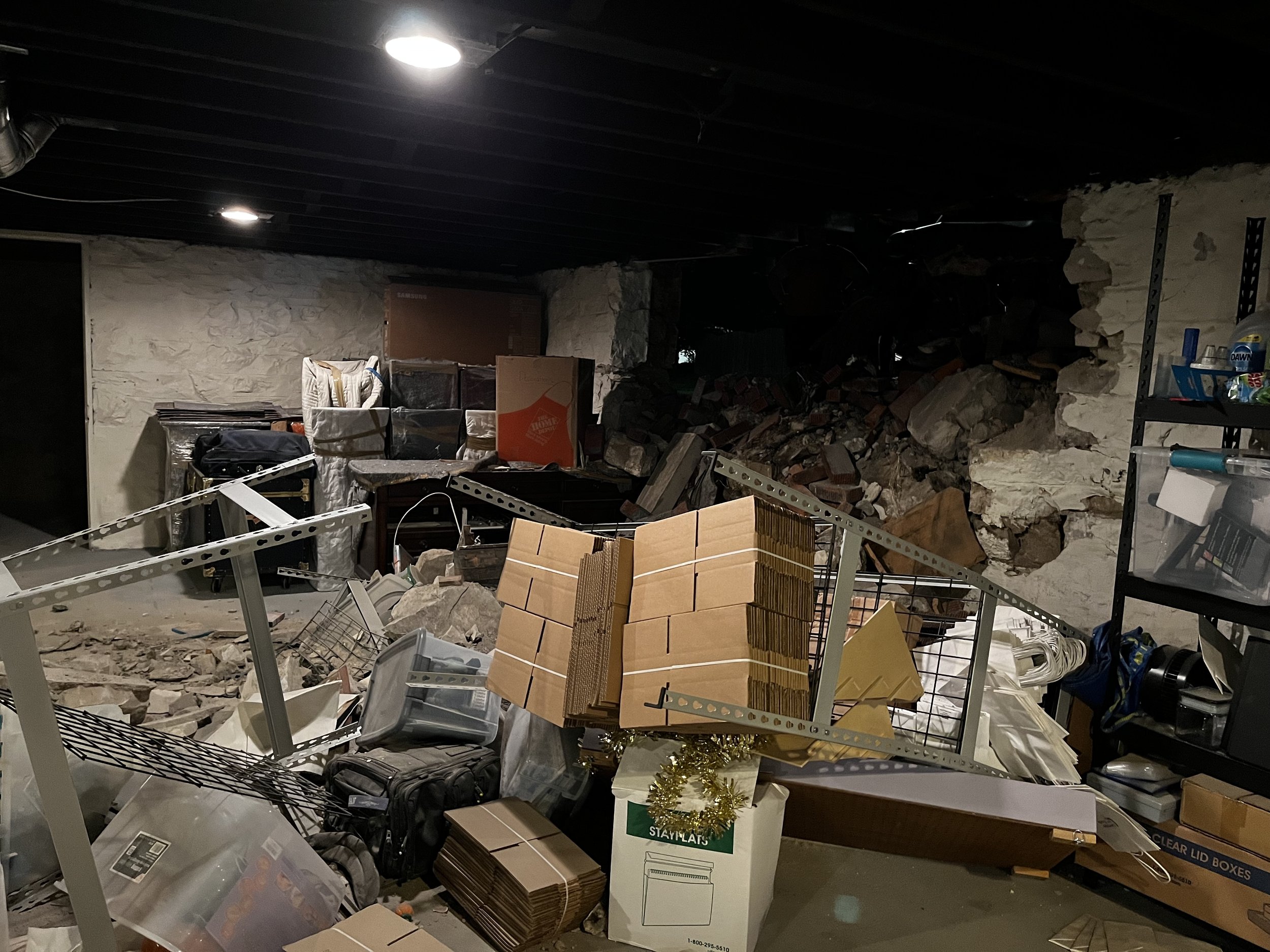
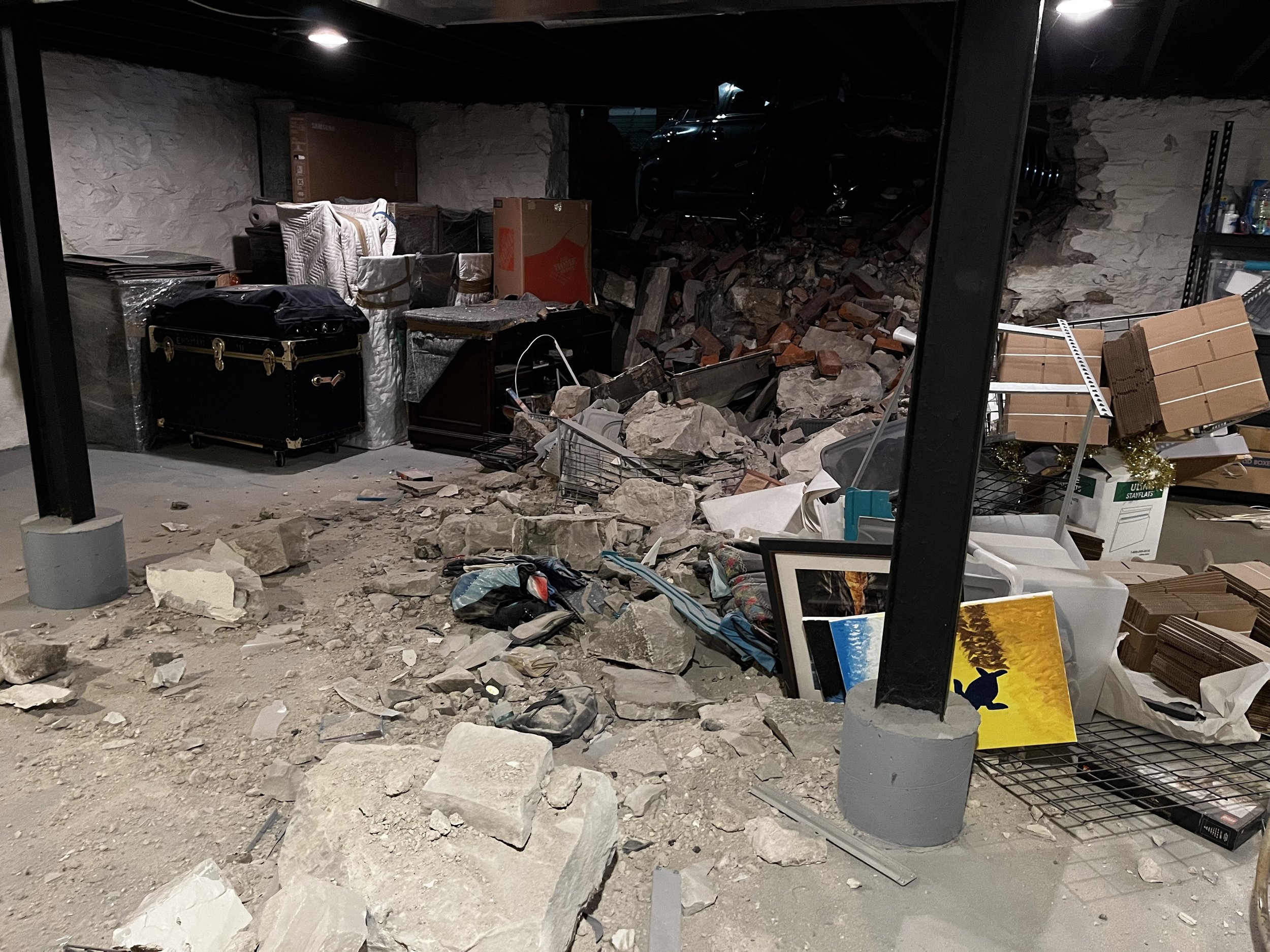
Emergency Stabilization
Around 5:00am, Sam from emergency services arrived! He boarded up the hole while my sister Annette worked on clearing debris and I grabbed supplies from Home Depot. (Doggy daycare also took Pippin on a few moments’ notice, which was very much appreciated. There were a lot of strange noises in and around the house that day.)
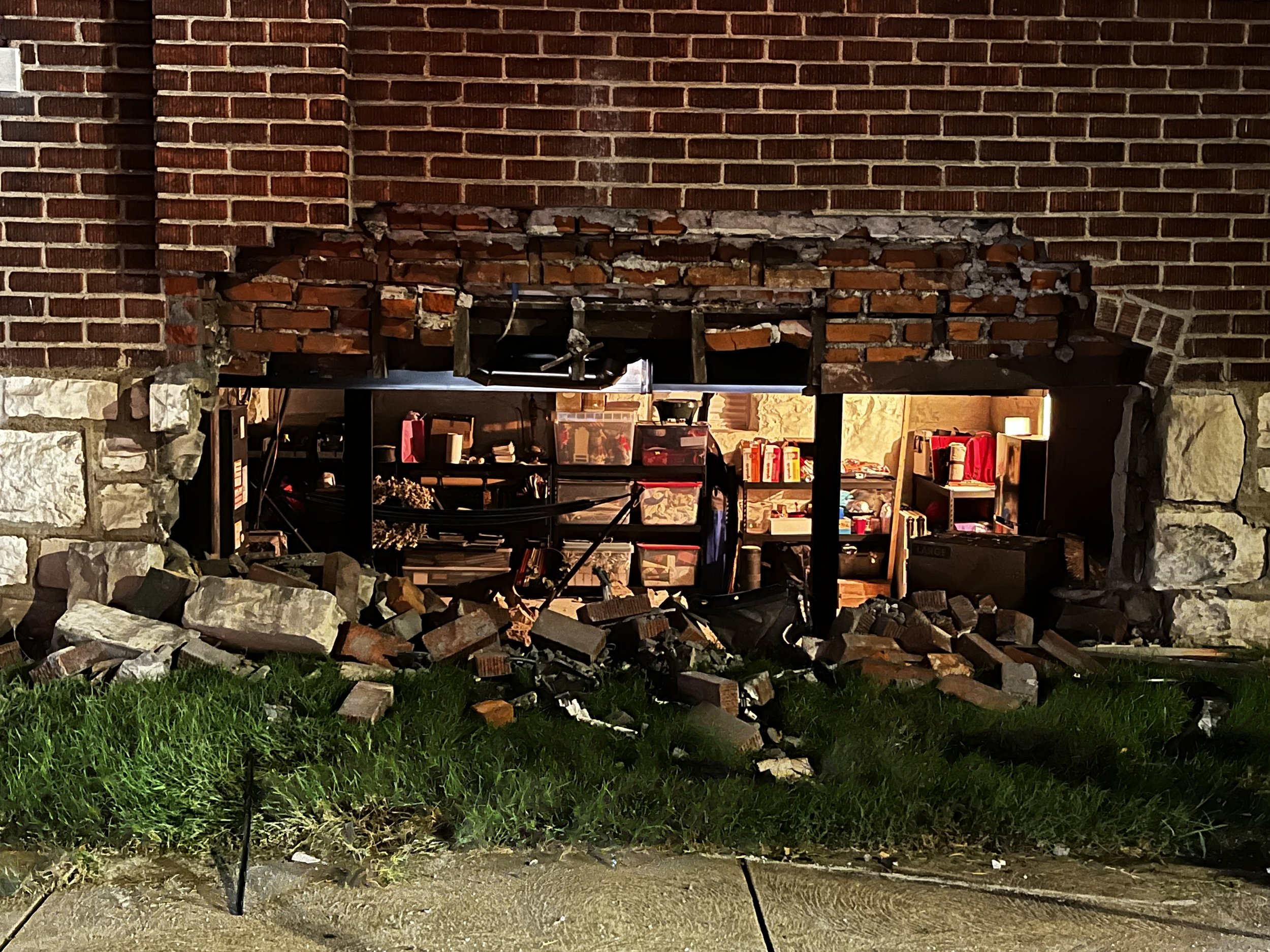
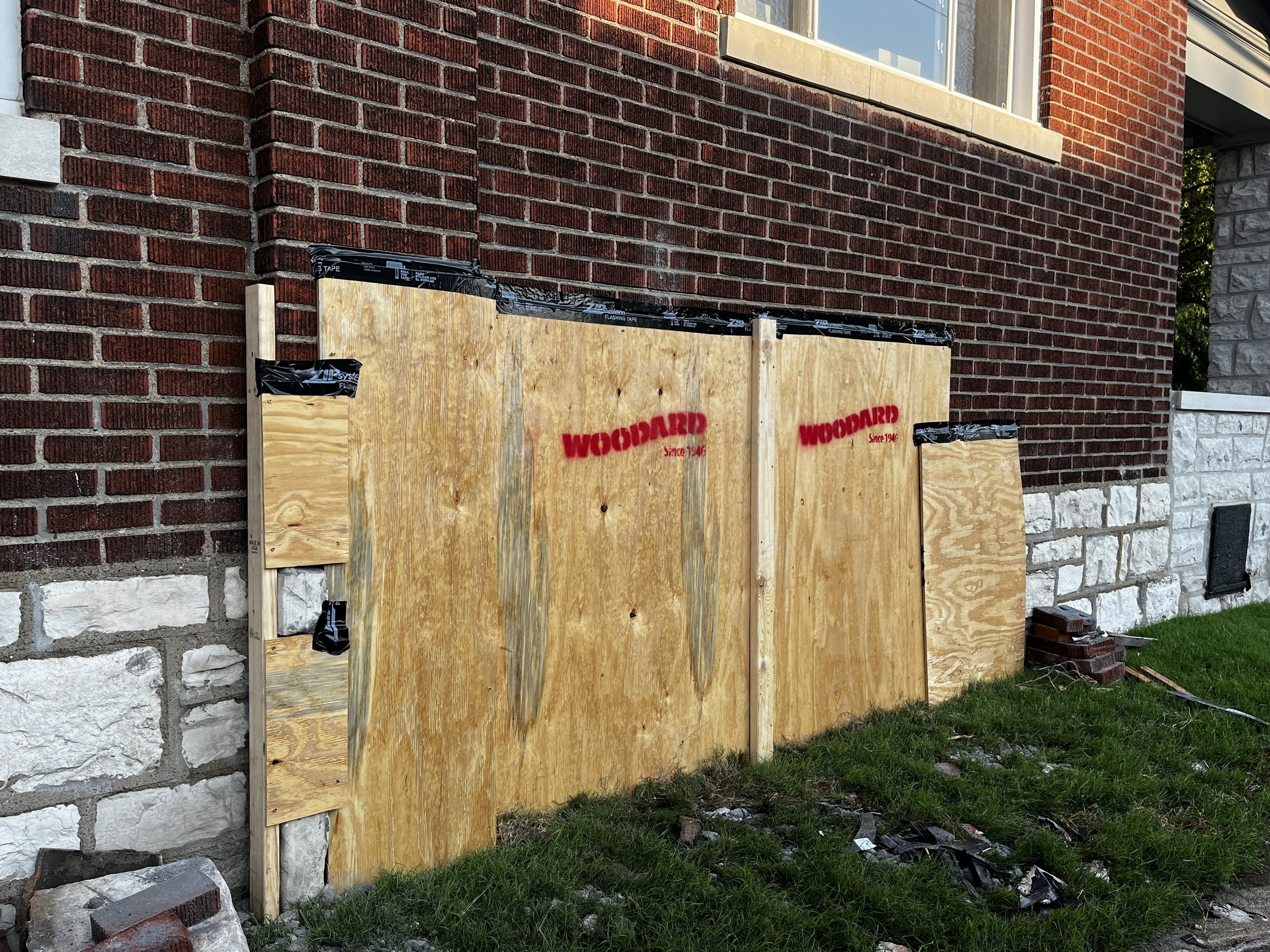
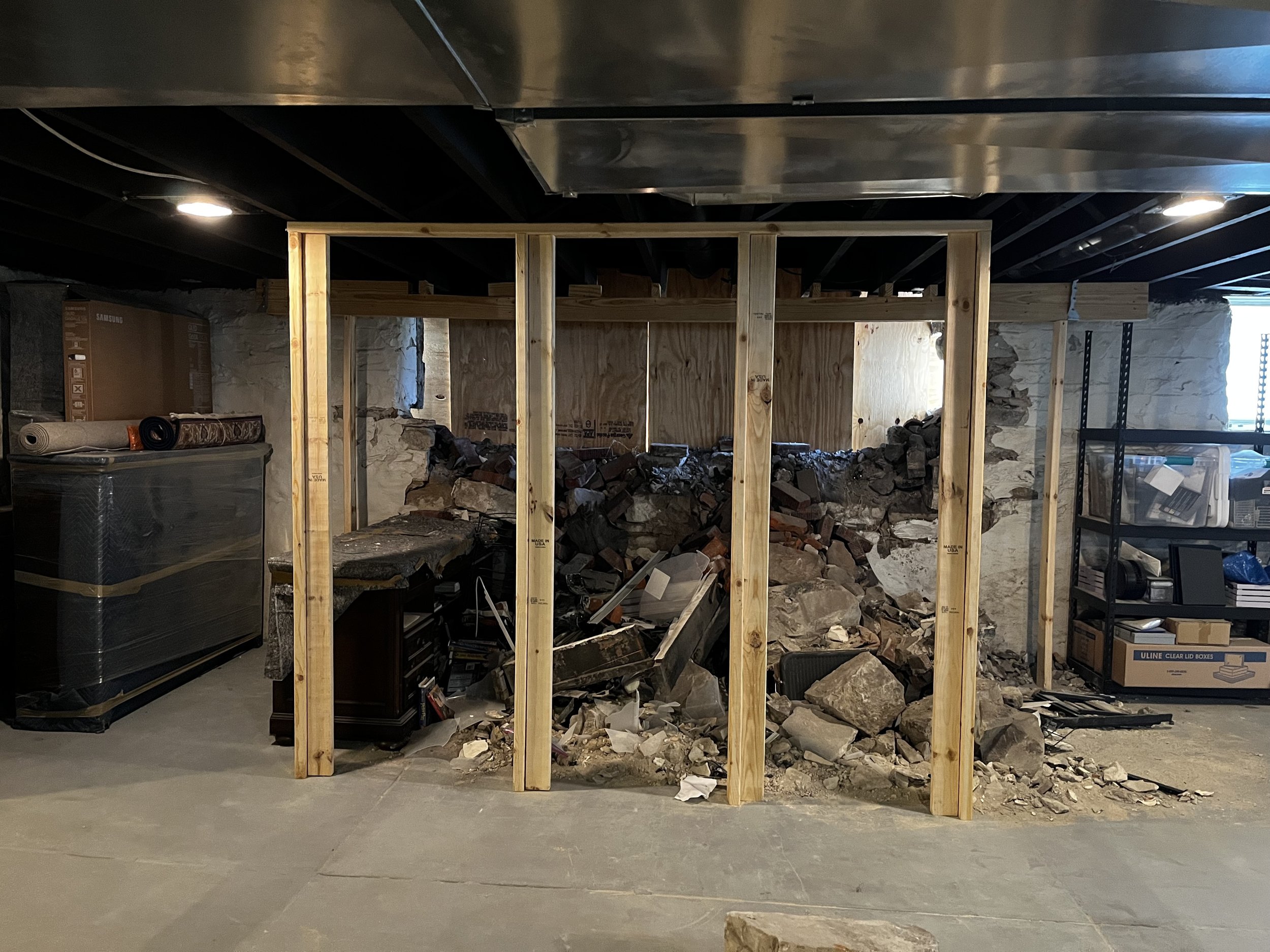
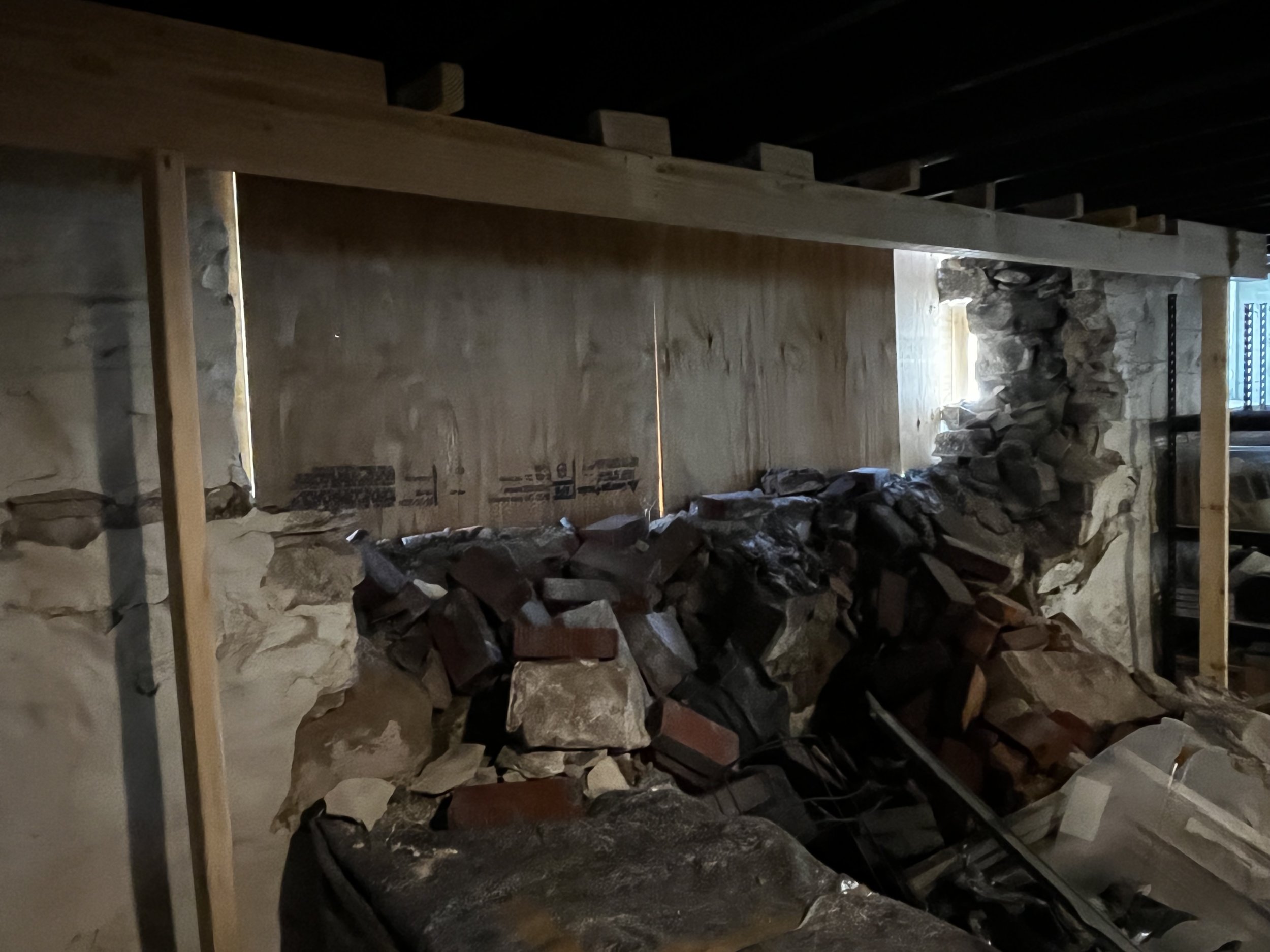
The sitting room wasn’t level to start with, but the piano didn’t previously lean that much… The baseboard separated and drywall cracked in the few hours that they weren’t supported. (It turns out that the foundation does have a purpose!)
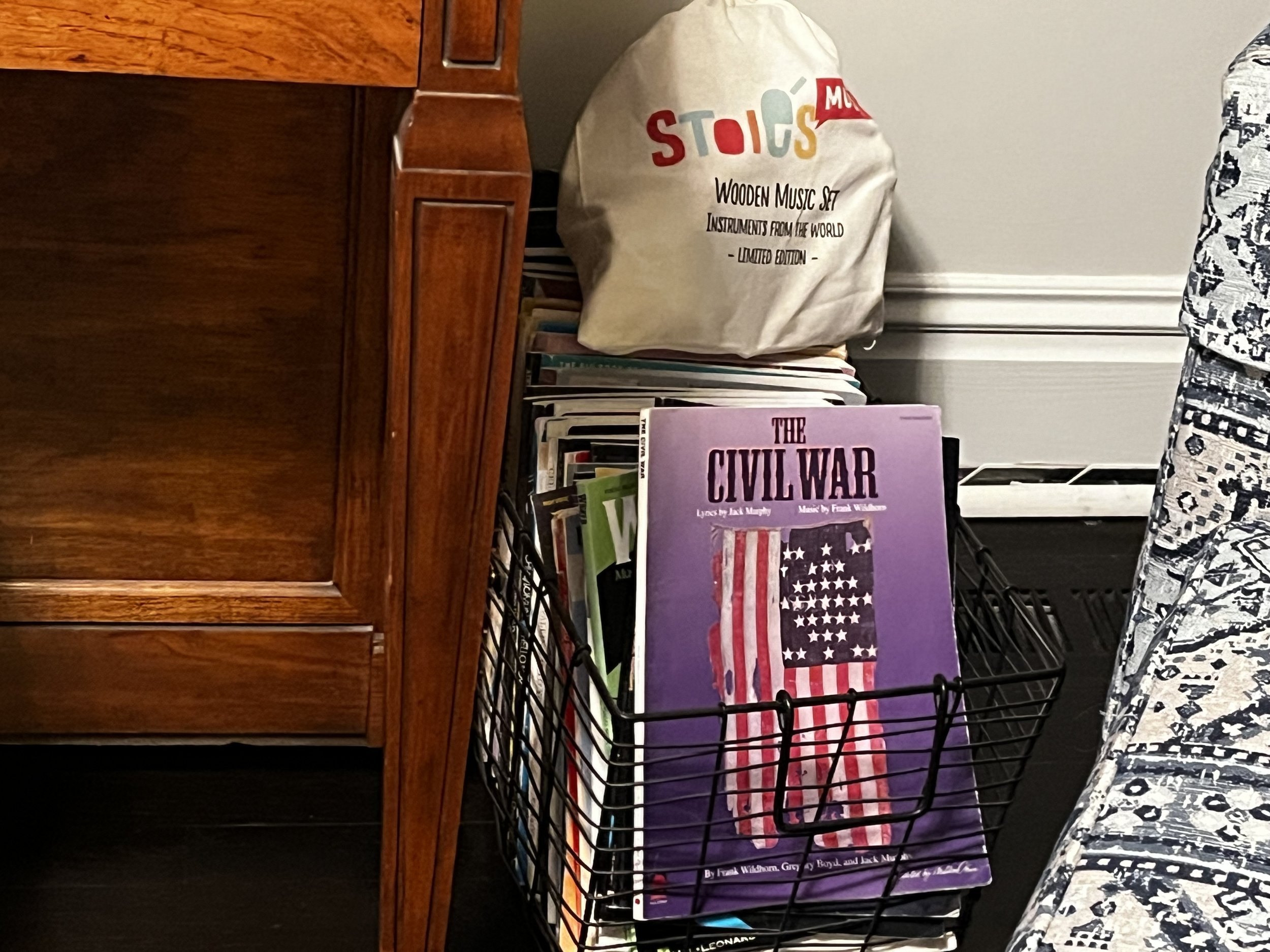
After Sam left, my sister and I were absolutely exhausted. The adrenaline from the night’s misadventures eventually wore off, and the reality of the situation sunk in.
The next day, some very dear friends (thanks Kristin, Natalie, and Bella!) helped clear more debris, sweep the basement, and mow the yard. In what you’ll see is a theme, with a hole in my house, I was determined that everything else would feel normal. Thus: mowing around the board-up.
Afterwards, my sister and I decided to go to the pool and then out to lunch, where we ran into a friend, who listened to our crazy story and very generously covered lunch. (Much appreciated, Clarissa!) The kindness of friends is also a theme of this experience.
The Aftermath
I could not have predicted the number of people that would come to my house over the next four months to measure the same hole, take the same pictures, and ask the same questions.
Insurance was a delight to work with. (Well, my homeowners insurance was great; the driver’s mom’s car insurance was less of a delight, but they eventually paid my insurance back for the repair.)
The general contractor I selected was not great: he was the opposite of proactive, and every step along the way felt like pulling out teeth. Most of the lessons learned, included below, come from my back-and-forth with the GC over these months that felt like years.
Thankfully everything got in order, and we got back on the brick team’s schedule before it got bitterly cold!
Repair
On Friday, November 15, Dan, Jimmy, John, and James began the foundation and brick repair. They reused almost every foundation stone and brick that had crashed down, along with a few from their stash. Watching them rebuild the wall was absolutely amazing, and my sister was our main quality assurance specialist. Her key accomplishment was making sure the two rows of freehand arches had the correct number of bricks!
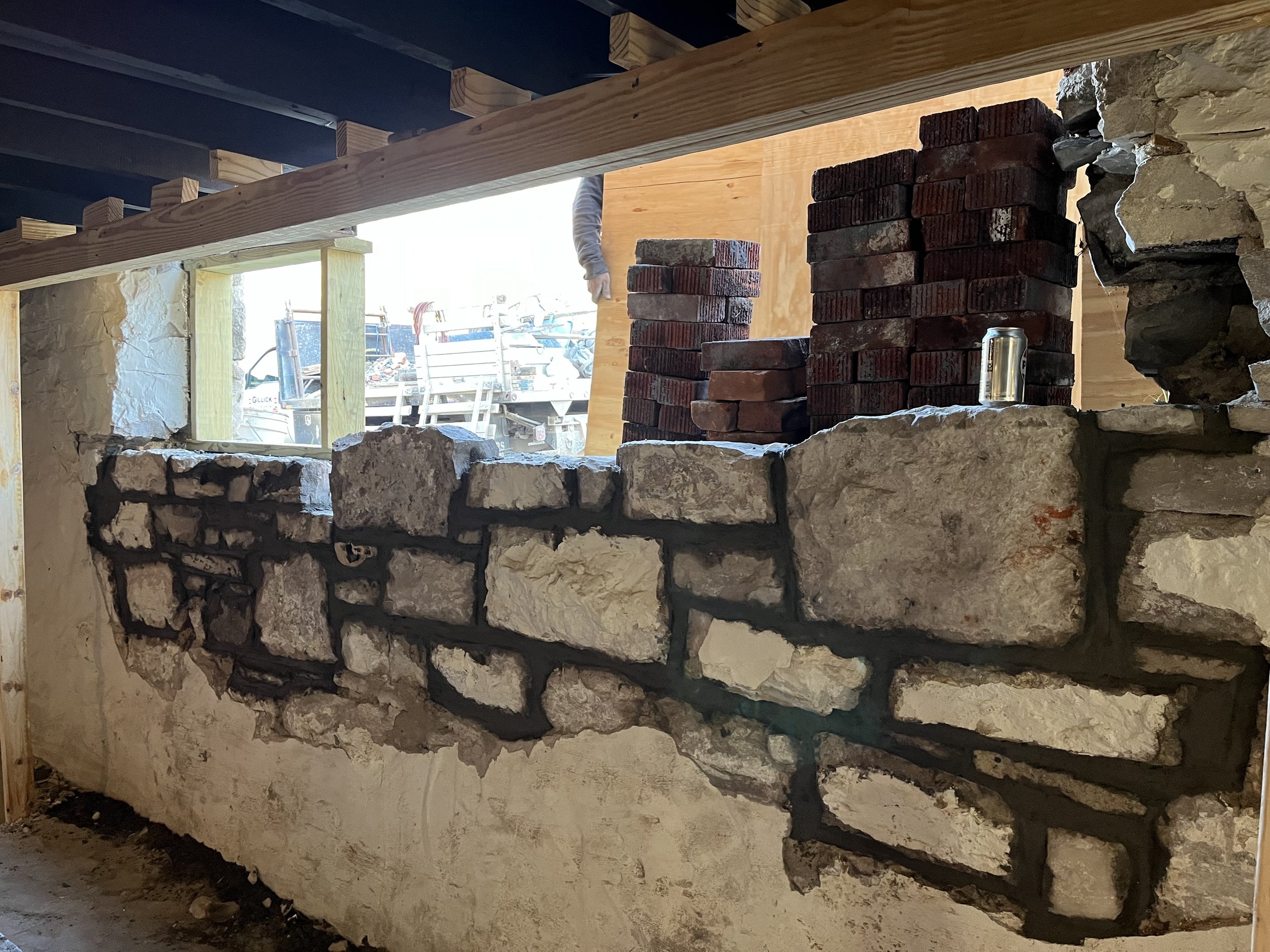

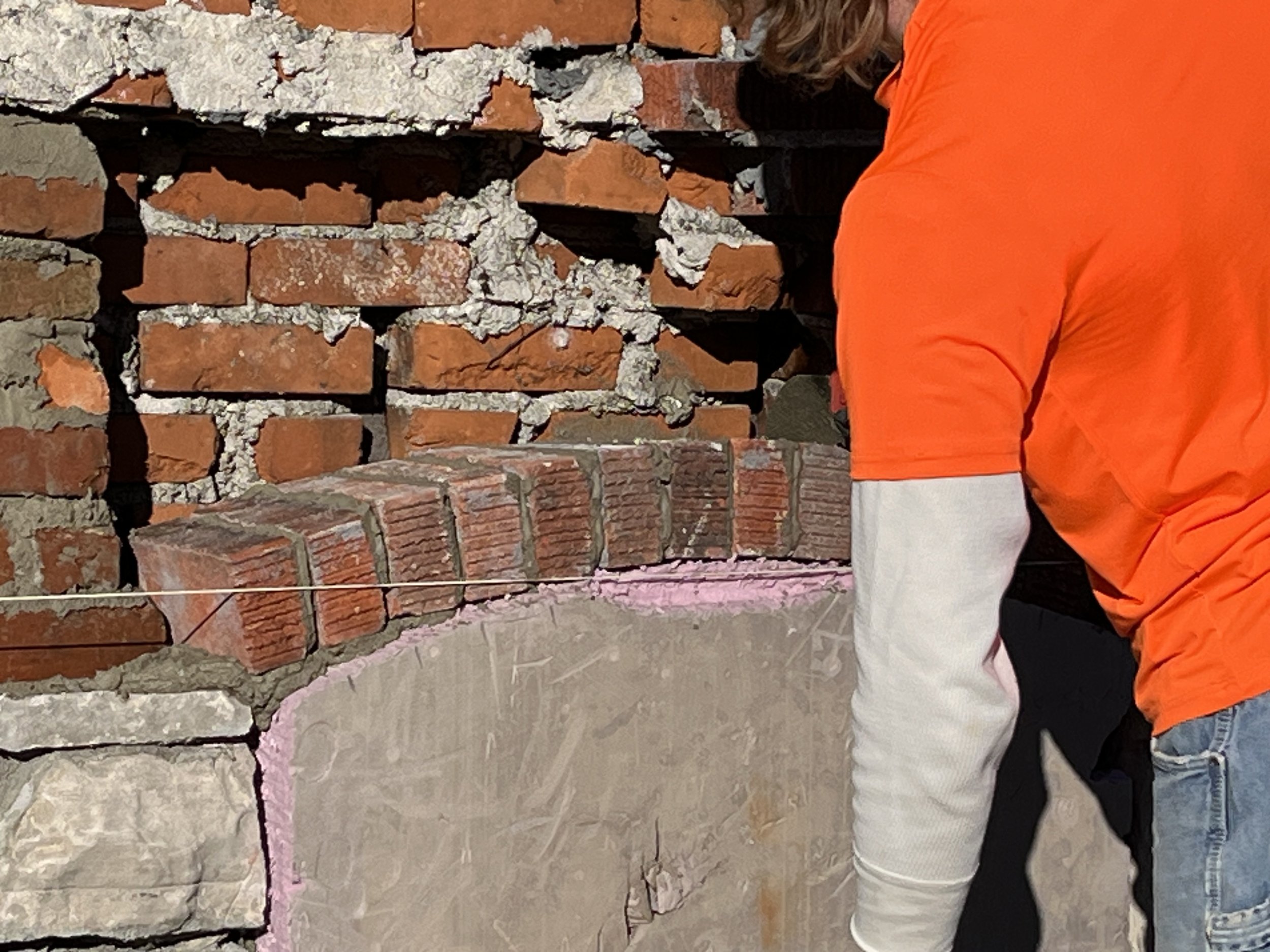
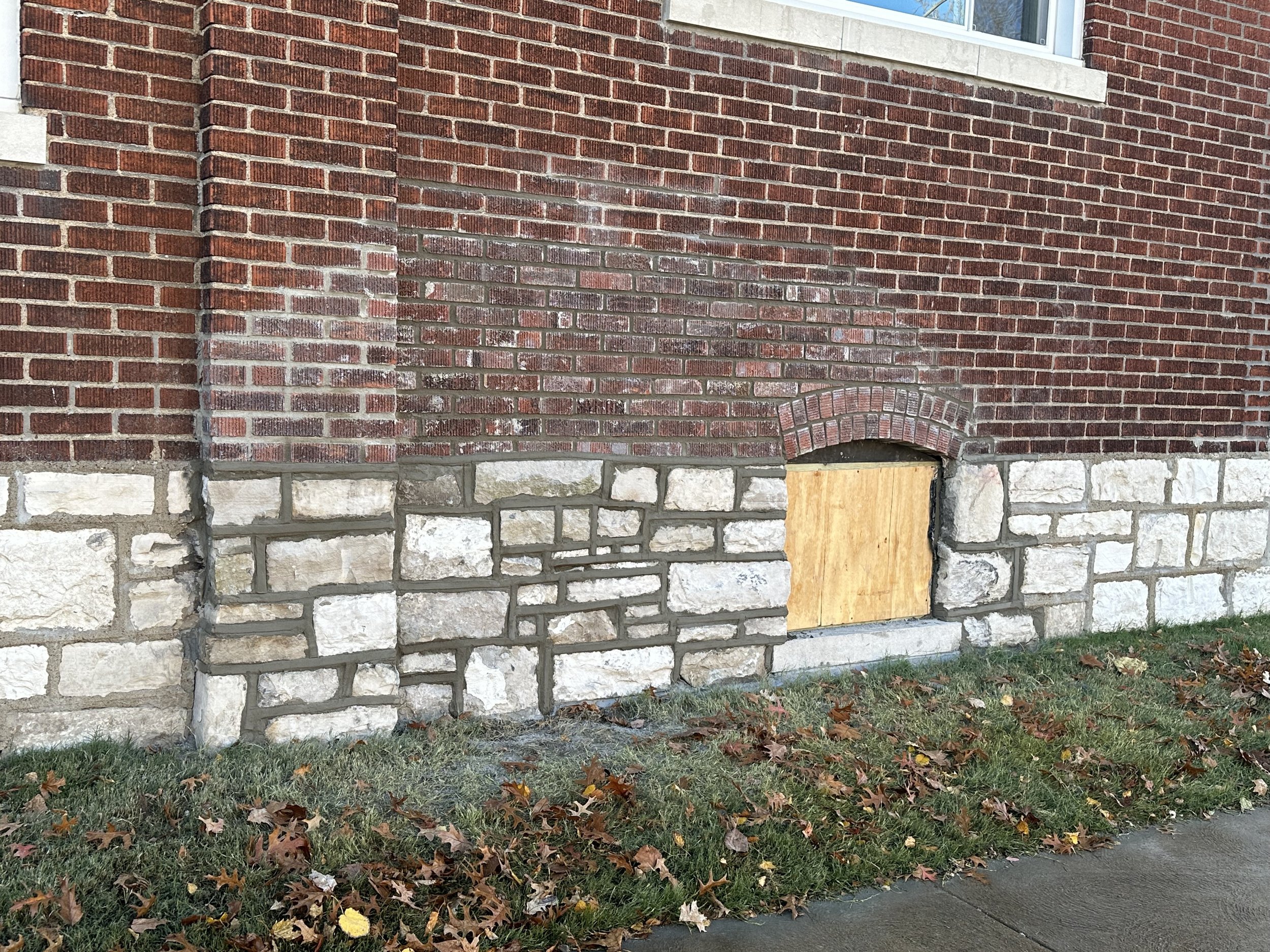
The brick team finished their portion of the repair in three days, and the GC’s team installed the window over the next two weeks.
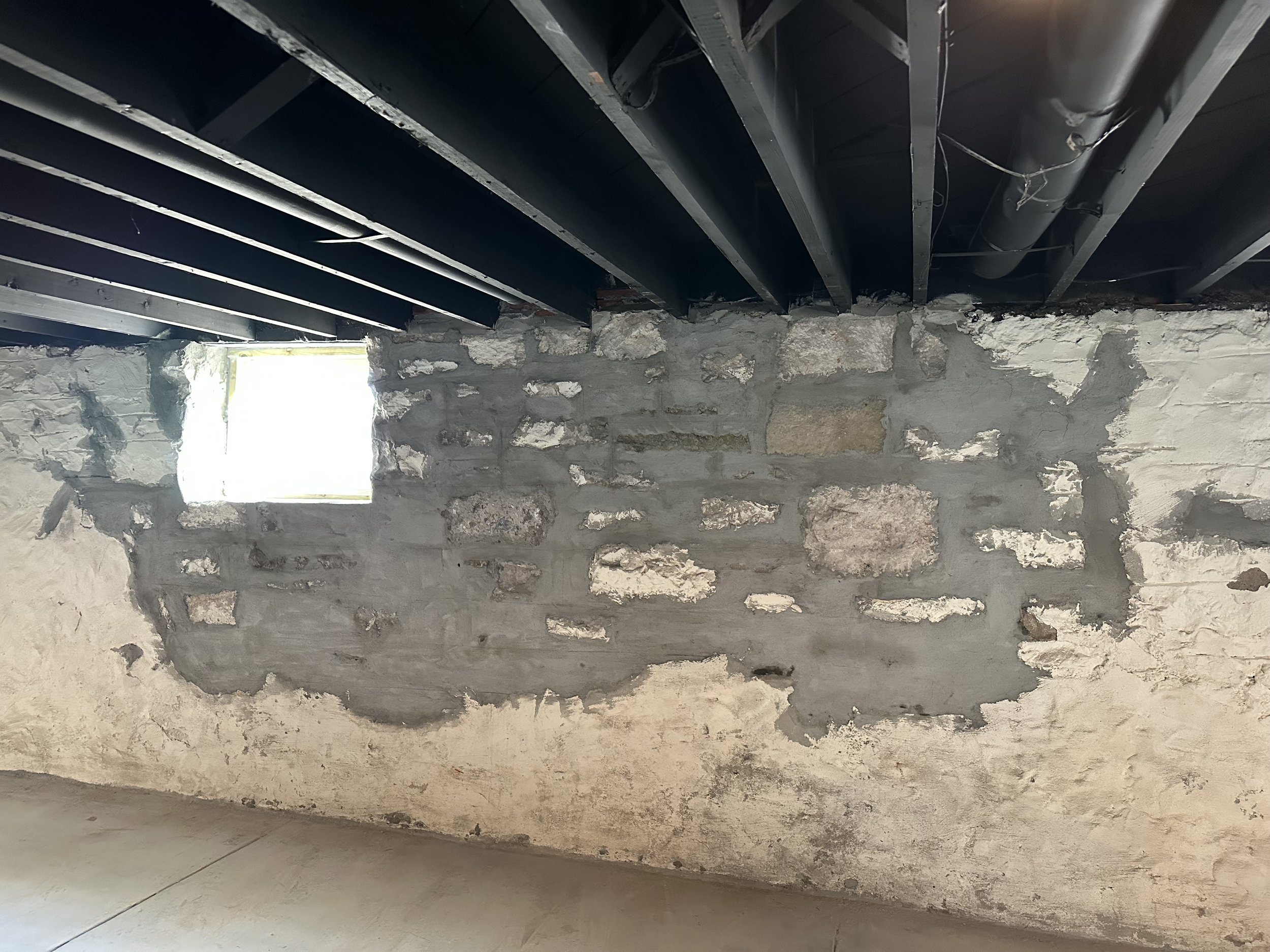
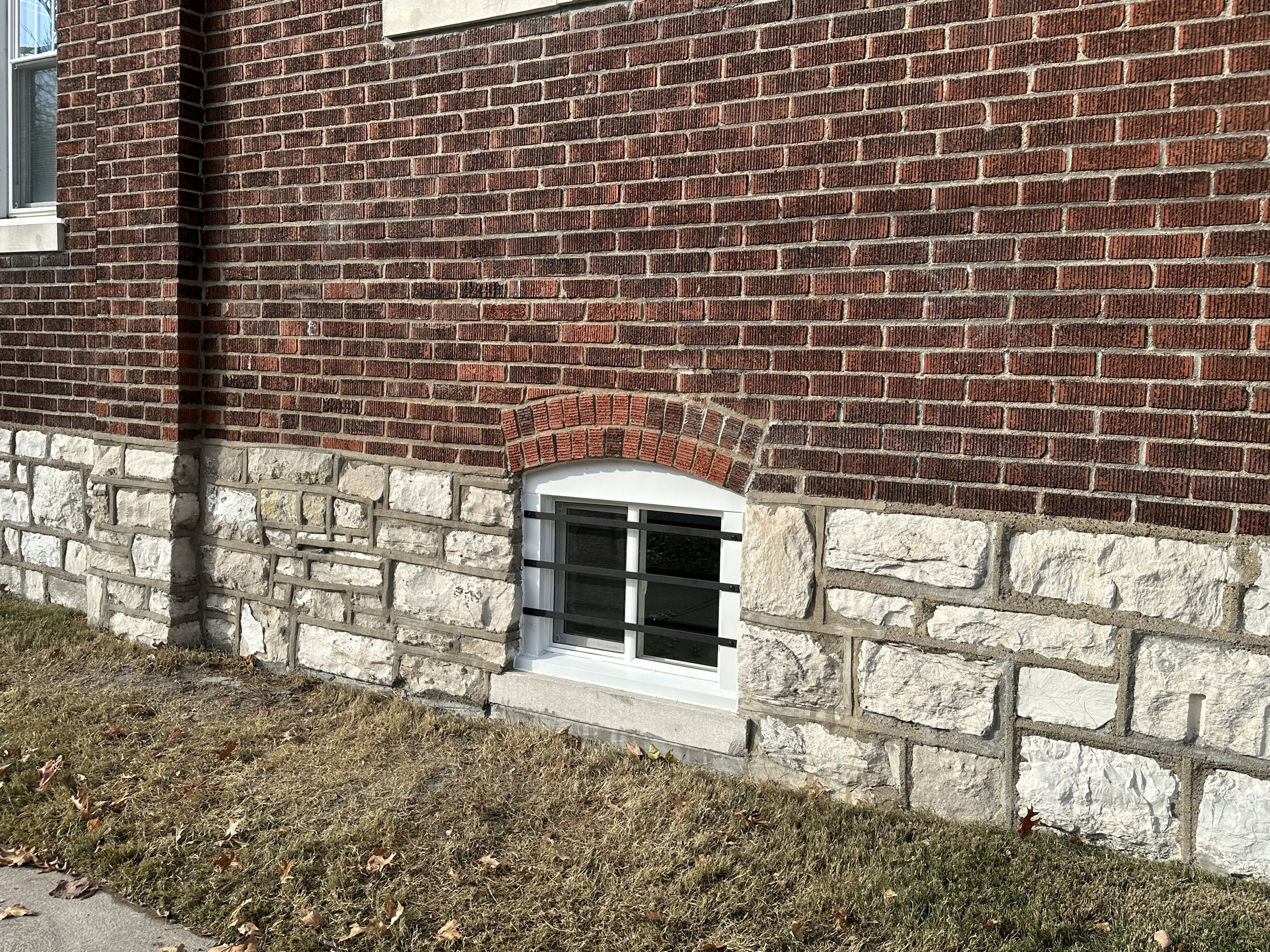
The cherry on top was getting the front room repaired and repainted so we could decorate for Christmas.
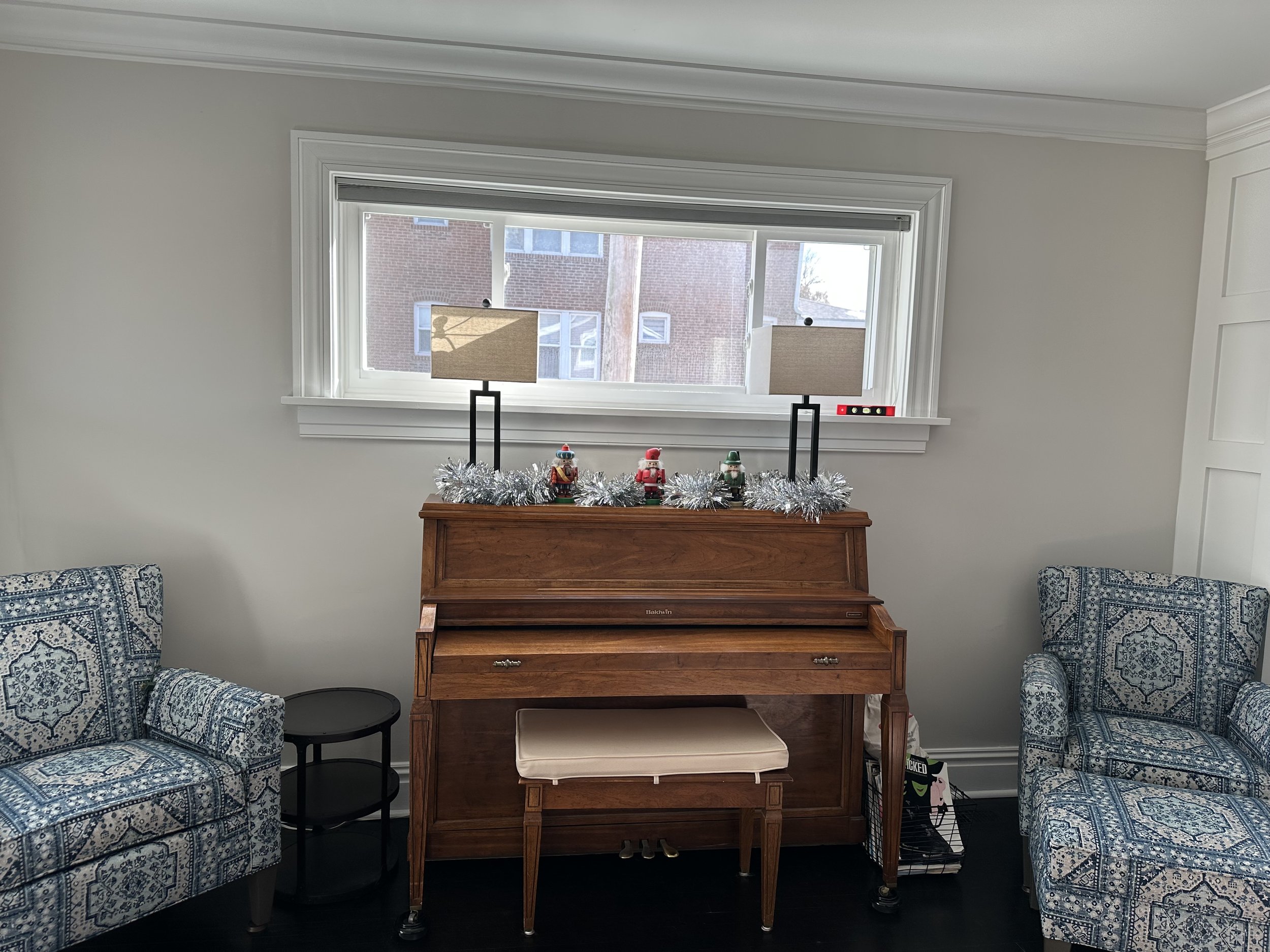

I decided to paint the basement walls and floor myself (with help – thanks, Mom and Kristin!) rather than coordinate with vendors for several more weeks (the new mortar needed to cure before paint could go on).
So, many mornings and evenings were spent deep cleaning the basement, patching cracks, taping edges, and painting. In what will go down as the most satisfying (but not necessarily fun) PTO day ever, Mom and I painted nearly all of the walls one Thursday, so that it could dry before Kristin and I painted the floor on Monday afternoon.
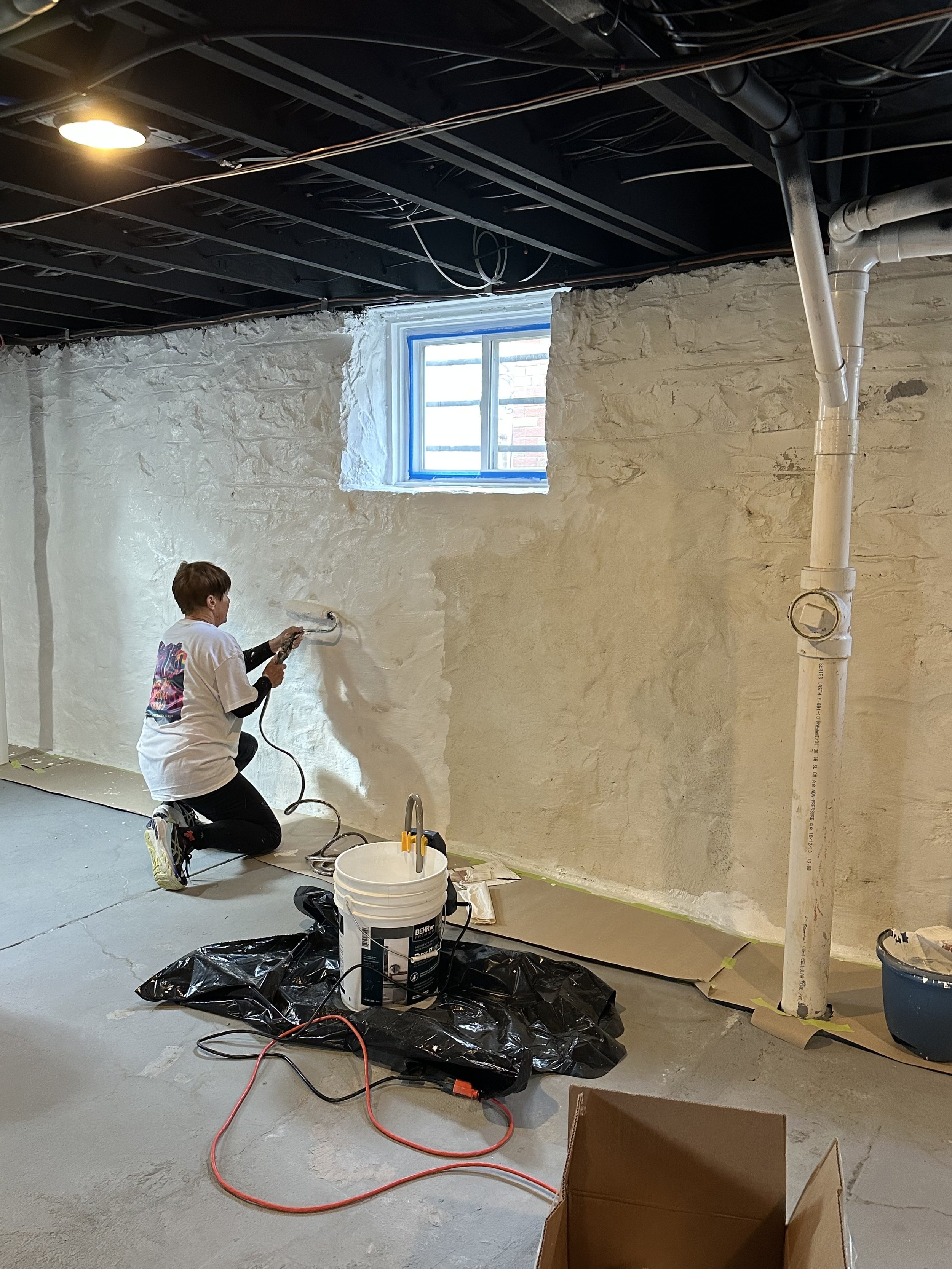

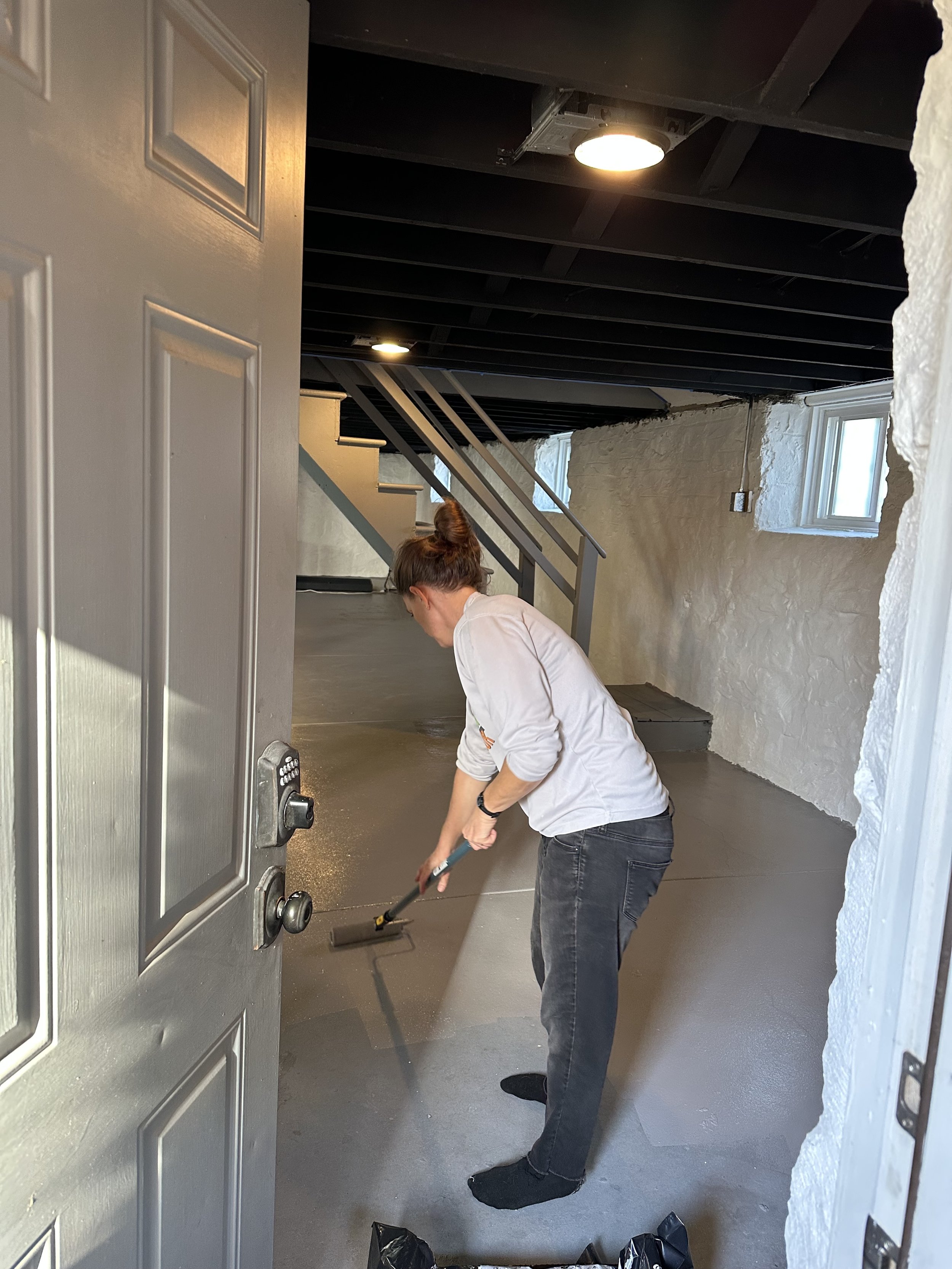
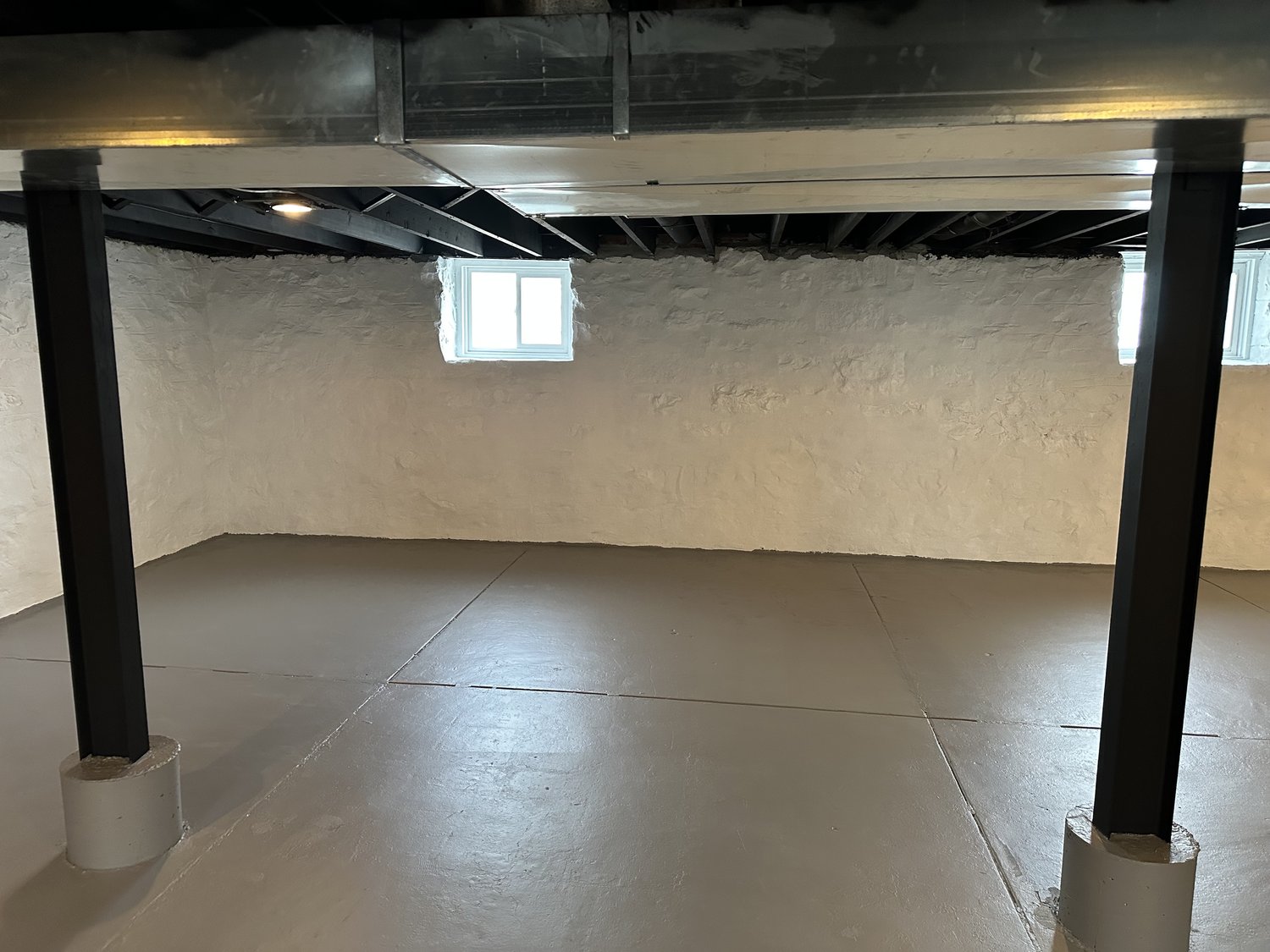
Lessons Learned
Taking on a major home repair project can teach valuable lessons about communication, project management, and design—insights that can make future repairs or renovations smoother.
Communication
Proactive Updates
Even if progress is slow, regular updates help prevent frustration. If your contractor doesn’t call, set expectations like, “Update me weekly, even if there’s no major news.”
Clear Answers
If you find yourself asking the same question repeatedly, it’s likely because the initial response wasn’t clear. Insist on straightforward, actionable answers to avoid miscommunication and delays.
Setting Expectations and Advocating for Yourself
On big projects, insist on a kickoff meeting where you discuss the program scope, how you’ll approach completing it, how you’ll coordinate and understand progress/issues/roadblocks, and what success looks like. In this case, we had the insurance estimate as a general guide, and the GC told me which brick company he was using, but I didn’t have a clear sense for precisely how the repair would get done, which high-level steps would be completed, and what each party was responsible for.
In an early conversation, I asked what the GC needed of me, and he said making decisions quickly, which fits a renovation more than a repair. (“Make it a wall again!”) In retrospect, I should have insisted on getting on the same page with the GC early on. Once we were in the flow of the project, and I wasn’t getting the results or communication I wanted, every question I sent came at a considerable emotional cost, so I only sent the highest priority questions to the GC. That resulted in surprises, stall-outs, and frustration.
Understanding the overall flow also would have allowed me to advocate for myself more effectively. For instance, if I’d known each of the steps we were following and how long they were supposed to take, I could have offered a completion incentive for having a permit in hand within four weeks from signing on with the GC.
Moreover: check references. The GC was recommended by someone I trusted, so I considered that the reference check. Bad choice! I should have required two references of similar repair work. There certainly would still have been unhappy surprises inherent in construction like this, but I bet the overall project would have been better if I’d known what to do/ask or chosen a different general contractor based on reference checks.
Project Management
Plan Ahead
Ensure your contractor has identified and address dependencies early. For example, if permits or materials are needed, start the process as soon as possible. Delaying until the last minute can create costly bottlenecks. During this project, a mismatched window had to be used because sourcing was delayed. Make sure your GC is planning ahead for materials ensures your choices align with your vision and timeline. Ideally, your GC is experienced and managing all this.
Worthy Scope Creep
Some scope creep is worth it, and the rest is a distraction. Understand your priorities and constraints well enough to parse through the project scope and potential additions/adjustments. In this case, the worthy scope creep was having the brick team patch the entire basement wall where years had taken their toll, not just doing a parge (or skim) coat of mortar over the repaired section. This required specific skill, and it was worth having the brick team take a few additional hours to repair the vast majority of the basement wall imperfections.
I also considered painting the basement walls and floors worthy scope creep. We’d cleared everything out of the basement because it was VERY dusty, and it would only get dirtier with the repair. So, I couldn’t pass up the opportunity to paint every surface while the basement was as close to empty as it will ever be.
What didn’t end up making sense: having a vendor paint the basement walls. I’d gotten some money from insurance to paint the one affected wall, but it covered so little of the quote that I was going to pay more out of pocket than I was willing. So I used that money to purchase paint and supplies, and I donated the labor myself. Good compromise! Even though I spent many too many hours hunched in non-ergonomic positions, it was totally worth it.
A related lesson learned: ask for help! Truly. This does not come easily to me, but it was an important part of surviving these four-and-a-half months. Actively look for opportunities to engage supporters, particularly on items that have flexible timeframes. Then ask for help, and let them be part of designing and implementing the solution.
Pacing Yourself
This brings us to a final set of lessons learned and relearned: home repair and business transformation is a marathon, not a sprint. Take care of yourself to enable long-term success. For me, this included maintaining a semblance of normalcy in the rest of life. I decided that the rest of the house could not feel like a construction zone… until it actually was one. So, we sacrificed the garage. My sister and I moved our cars to the street, and we moved all our basement belongings and the growing set of cleaning and painting supplies to the garage. We kept the piles there instead of in the dining room to protect what sanity we had left.
We also cooked more Costco freezer meals than we typically do. It was healthy enough and fast enough for what we needed.
A final lesson I’ll always be learning: work the problem in front of you. I spent a lot of this experience ruminating about what might happen, what I might say, what I previously said and whether it hurt or helped the situation. That took a considerable toll on my well-being. It took attention, effort, and focus that I could have spent on more valuable things. So, do what you can to focus on the thing that’s right in front of you, knowing that you’ve made the best choices you could with the information and energy you had, and trusting that you can navigate next steps as they come.
By applying these lessons, homeowners can take a more active role in managing repairs, minimizing delays, and ensuring their homes are built to last.
Concluding Thoughts
I wouldn’t wish this situation on anyone, but I’m glad for the lessons I can take away from it. I hope this recounting of what I’m somewhat fondly calling the Big Damn Hole Saga (named by ever-creative friend April) will help you navigate the next major program you encounter, whether in a service-providing capacity or as a client.



